Francolin: Ug99-tolerant wheat variety released in Bangladesh
The danger posed by the Ug99 strain of the disease stem rust to global wheat production is well recognized, and Bangladesh is no exception. Wheat is one of the major cereals in Bangladesh, ranking second after rice with a cultivated area of 0.38 m ha and average yield of 2.6 t/ha. In a major step in countering the disease threat, a new wheat variety, named Francolin, was released on 06 March 2012. Also known as BARI Gom 27 (previously BAW 1120), Francolin, first introduced to Bangladesh in 2008 from CIMMYT-Mexico, possesses good resistance to all variants of Ug99 along with an impressive agronomic performance. It yielded approximately 10% more than the most popular variety Shatabdi in three years of multi-location testing in Bangladesh.
Its performance in on-farm testing was also significantly superior to all check varieties. “Francolin is popular among the participating farmers because of its high grain yield potential and good agronomic traits,” said T.P. Tiwari, cropping systems agronomist at CIMMYT-Bangladesh, adding that it also performed better than other varieties during on-farm testing.
Francolin is already under demonstration in farmers’ fields through participatory variety selection (PVS), the multi-location testing (MLT) program of the Bangladesh Agricultural Research Institute (BARI), and a participatory seed multiplication program. These activities are being jointly implemented by BARI’s Wheat Research Centre (WRC) and CIMMYT, and are also well integrated into the Cereal Systems Initiative for South Asia (CSISA) validation and demonstration programs in Bangladesh. According to CIMMYT scientists T.P. Tiwari and Arun K. Joshi, seed multiplication of this variety is in progress on 55 ha in 23 different locations in Bangladesh during the current crop cycle. This is expected to produce around 150 tons of seed that will be available for the next planting season, meeting the needs of the Bangladesh Agricultural Development Corporation (BADC) and the Department of Agricultural Extension (DAE), the government agencies responsible for large-scale seed production and distribution. Francolin is also being disseminated through informal channels (farmer-to-farmer).
This step toward mitigating the threat of Ug99 was made possible in part by a USAID seed-multiplication famine fund program. The WRC and CIMMYT-Bangladesh are working together under this program to identify suitable Ug99-resistant varieties, and carry out seed production and delivery. Israel Hossain, Abu Zaman Sarker (WRC), T.P. Tiwari, M. Gathala, and T. Krupnik (CIMMYT) also report that Francolin is performing exceedingly well under conservation agriculture (CA) practices such as strip- and zero-tillage.
The WRC and CIMMYT are developing linkages between seed producers and traders to facilitate marketing. Additionally, information regarding the benefits of growing Ug99-resistant varieties is disseminated through media outlets such as newspapers, radio, and television. The first Ug99-resistant wheat variety to be released in Bangladesh was BARI Gom 26 (previously known as BAW, and popularly called Hashi), in 2010. The two new varieties are expected to cover just over 5% of the total wheat area in 2012/13.
Wheat scientists involved in the development of Francolin include Naresh C.D. Barma, Paritosh Kumar Malaker, Dinabandhu Pandit, Md. Abdul Hakim, and Jalal Uddin, among others. Agronomists and soil scientists from BARI and CIMMYT-Bangladesh were also involved in its validation and promotional activities.
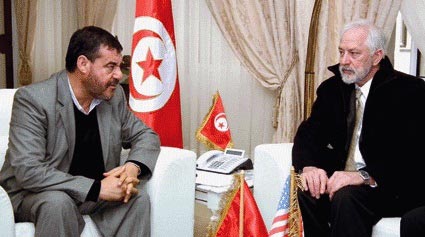
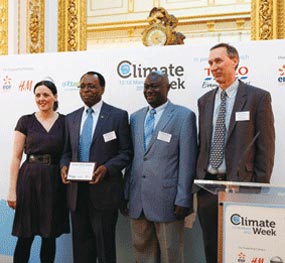 DTMA has been responsible for the development and dissemination of 34 new drought-tolerant maize varieties to farmers in 13 project countries—Angola, Benin, Ethiopia, Ghana, Kenya, Malawi, Mali, Mozambique, Nigeria, Tanzania, Uganda, Zambia, and Zimbabwe—between 2007 and 2011. An estimated two million smallholder farmers are already using the drought-tolerant maize varieties and have obtained higher yields, improved food security, and increased incomes.
DTMA has been responsible for the development and dissemination of 34 new drought-tolerant maize varieties to farmers in 13 project countries—Angola, Benin, Ethiopia, Ghana, Kenya, Malawi, Mali, Mozambique, Nigeria, Tanzania, Uganda, Zambia, and Zimbabwe—between 2007 and 2011. An estimated two million smallholder farmers are already using the drought-tolerant maize varieties and have obtained higher yields, improved food security, and increased incomes.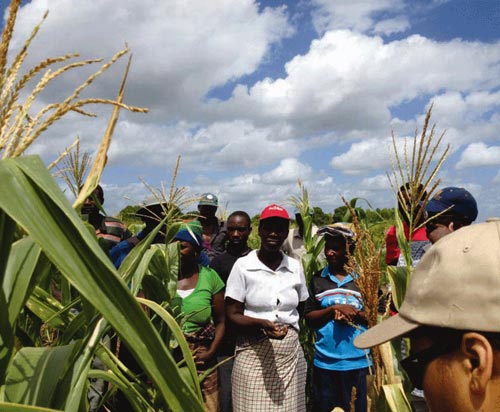 “Increasing Sustainable Agricultural Production in Mozambique through Drought Tolerant Maize and Conservation Agriculture” is a USAID-supported initiative bringing together two key components of CIMMYT’s work: Breeding for drought tolerance and sustainable land management to mitigate the effects of climate change.
“Increasing Sustainable Agricultural Production in Mozambique through Drought Tolerant Maize and Conservation Agriculture” is a USAID-supported initiative bringing together two key components of CIMMYT’s work: Breeding for drought tolerance and sustainable land management to mitigate the effects of climate change.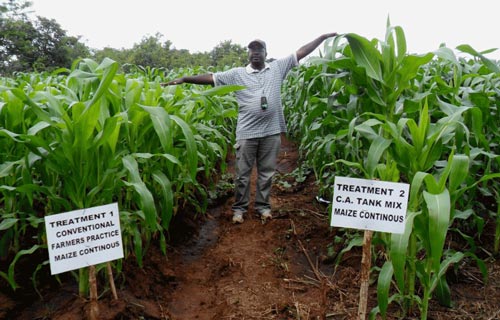 During 06-10 February 2012, a team of CIMMYT scientists travelled to six communities in Zambia’s Eastern Province to monitor progress on activities implemented under the Sustainable Intensification of Maize-Legume systems for the Eastern Province of Zambia (SIMLEZA) project, funded by USAID as part of Barack Obama’s “Feed the Future” initiative. The team was joined by national partners from governmental extension services, field coordinators from Total Land Care, Zambian researchers from Msekera Research Station, IITA, and CIP, and a group of farmers from Monze, in Zambia’s Southern Province. Journalists from two radio stations, one daily newspaper, and Zambian television covered the visit.
During 06-10 February 2012, a team of CIMMYT scientists travelled to six communities in Zambia’s Eastern Province to monitor progress on activities implemented under the Sustainable Intensification of Maize-Legume systems for the Eastern Province of Zambia (SIMLEZA) project, funded by USAID as part of Barack Obama’s “Feed the Future” initiative. The team was joined by national partners from governmental extension services, field coordinators from Total Land Care, Zambian researchers from Msekera Research Station, IITA, and CIP, and a group of farmers from Monze, in Zambia’s Southern Province. Journalists from two radio stations, one daily newspaper, and Zambian television covered the visit.
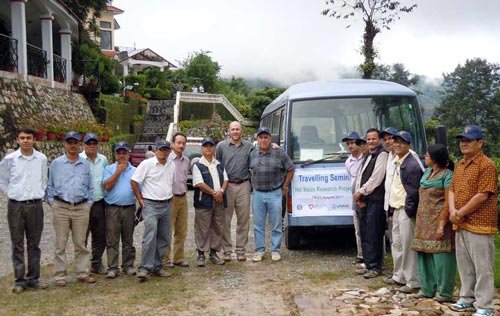 During 19-21 August 2011, a travelling seminar on “Maize Research and Development in the Hills of Nepal” was organized by the CIMMYT-led Hill Maize Research Project (HMRP), Nepal Agricultural Research Council (NARC), and the Nepal Department of Agriculture (DoA). The seminar offered policy makers first-hand information on maize varietal development, seed multiplication, technology dissemination, and HMRP’s efforts to improve food security and livelihoods of small-scale and disadvantaged farmers in the region. The 25 participants included representatives from the National Planning Commission, Ministry of Agriculture and Cooperatives, National Seed Board, NARC, DoA, donors (SDC and USAID), and NGOs.
During 19-21 August 2011, a travelling seminar on “Maize Research and Development in the Hills of Nepal” was organized by the CIMMYT-led Hill Maize Research Project (HMRP), Nepal Agricultural Research Council (NARC), and the Nepal Department of Agriculture (DoA). The seminar offered policy makers first-hand information on maize varietal development, seed multiplication, technology dissemination, and HMRP’s efforts to improve food security and livelihoods of small-scale and disadvantaged farmers in the region. The 25 participants included representatives from the National Planning Commission, Ministry of Agriculture and Cooperatives, National Seed Board, NARC, DoA, donors (SDC and USAID), and NGOs.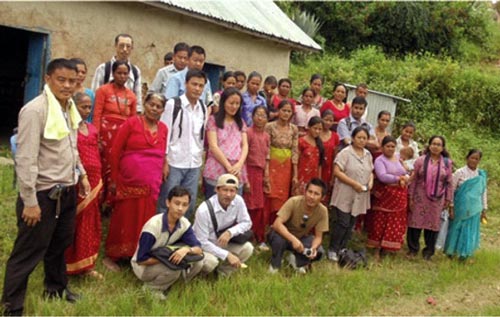 The following day featured a visit to the Hill Crop Research Program (HCRP), Kabre, Dolakha. Participants observed the onsite maize research and development activities, such as source seed production of improved maize varieties, and had the opportunity to interact with scientists at the station. N.P. Adhikari, Director of Crops and Horticulture, NARC, and D.B. Gurung, National Maize Coordinator, complimented the scientists for their accomplishments in maize research and development, both at the station and in the field.
The following day featured a visit to the Hill Crop Research Program (HCRP), Kabre, Dolakha. Participants observed the onsite maize research and development activities, such as source seed production of improved maize varieties, and had the opportunity to interact with scientists at the station. N.P. Adhikari, Director of Crops and Horticulture, NARC, and D.B. Gurung, National Maize Coordinator, complimented the scientists for their accomplishments in maize research and development, both at the station and in the field.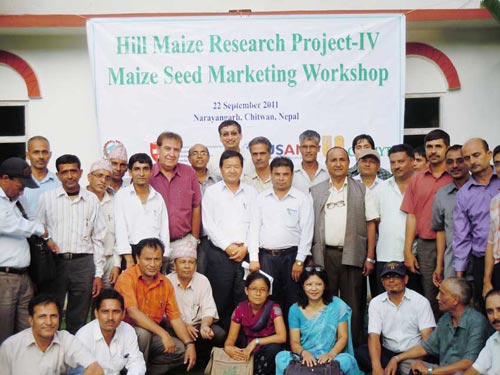
 “NL 3063 yielded 7% higher than the current most popular variety, Gautam, in three years of multi-location testing in Nepal,” said Madan Raj Bhatta, wheat breeder at Nepal Agricultural Research Council (NARC), adding that it also performed better than other varieties in on-farm testing.
“NL 3063 yielded 7% higher than the current most popular variety, Gautam, in three years of multi-location testing in Nepal,” said Madan Raj Bhatta, wheat breeder at Nepal Agricultural Research Council (NARC), adding that it also performed better than other varieties in on-farm testing. On 30 June 2010, a USAID Famine Seed Project meeting was organized at CIMMYT’s South Asia Office in Kathmandu, Nepal. Seventeen participants, including those from the Nepal Agriculture Research Council (NARC), CIMMYT-Nepal, CIMMYT-Bangladesh, and Cereal Systems Initiative for South Asia (CSISA) HUB partners in Nepal, attended the meeting. The objectives of the day were to: (1) review 2009-10 crop cycle work and progress, (2) to develop a work plan for the upcoming 2010-11 cycle and, (3) to strengthen collaboration with technology-delivering stakeholders.
On 30 June 2010, a USAID Famine Seed Project meeting was organized at CIMMYT’s South Asia Office in Kathmandu, Nepal. Seventeen participants, including those from the Nepal Agriculture Research Council (NARC), CIMMYT-Nepal, CIMMYT-Bangladesh, and Cereal Systems Initiative for South Asia (CSISA) HUB partners in Nepal, attended the meeting. The objectives of the day were to: (1) review 2009-10 crop cycle work and progress, (2) to develop a work plan for the upcoming 2010-11 cycle and, (3) to strengthen collaboration with technology-delivering stakeholders.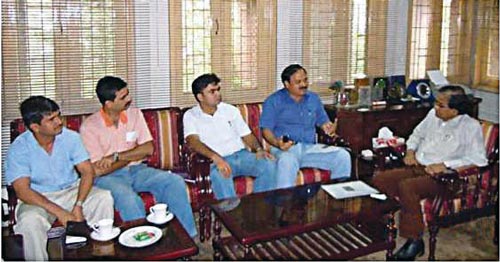
 Over 60 researchers, field technicians, farmers, machinery manufacturers, service providers, and extension workers attended two recent conservation agriculture (CA) training events in Bangladesh. The first event was held at the Bangladesh Agriculture Research Institute (BARI) station in Comilla on 28-29 April, followed by an event at the Wheat Research Centre of BARI in Dinajpur on 04-05 May. The events focused on machinery operation and maintenance, as well as the agronomy of dry direct-seeded rice (DSR). Both were part of joint CIMMYT-
Over 60 researchers, field technicians, farmers, machinery manufacturers, service providers, and extension workers attended two recent conservation agriculture (CA) training events in Bangladesh. The first event was held at the Bangladesh Agriculture Research Institute (BARI) station in Comilla on 28-29 April, followed by an event at the Wheat Research Centre of BARI in Dinajpur on 04-05 May. The events focused on machinery operation and maintenance, as well as the agronomy of dry direct-seeded rice (DSR). Both were part of joint CIMMYT-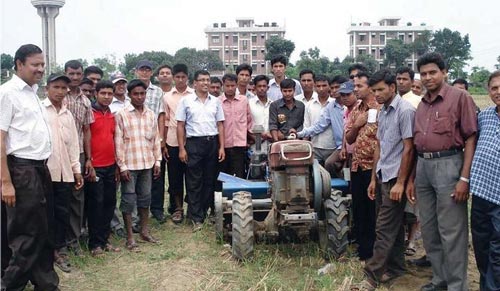 “Machinery operation and maintenance is vital for rapid dissemination of CA-based technologies,” said Jagadish Timsina, IRRI-CIMMYT senior cropping system agronomist. He added that this ACIAR-funded ricemaize project has been adapting and evaluating the PTOS and the bed former/planter at project sites, and has been refining these machines for their use in different soils with the help of agriculture engineers from the national agriculture research intuitions involved in the project. The project has given special emphasis to training and capacity building for machine use and has already trained more than 120 people from government and non-governmental organizations, as well as farmers, service providers, machinery manufacturers, and extension workers since it started in November 2008.
“Machinery operation and maintenance is vital for rapid dissemination of CA-based technologies,” said Jagadish Timsina, IRRI-CIMMYT senior cropping system agronomist. He added that this ACIAR-funded ricemaize project has been adapting and evaluating the PTOS and the bed former/planter at project sites, and has been refining these machines for their use in different soils with the help of agriculture engineers from the national agriculture research intuitions involved in the project. The project has given special emphasis to training and capacity building for machine use and has already trained more than 120 people from government and non-governmental organizations, as well as farmers, service providers, machinery manufacturers, and extension workers since it started in November 2008.